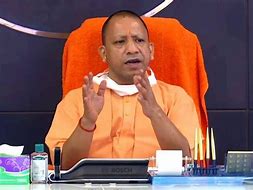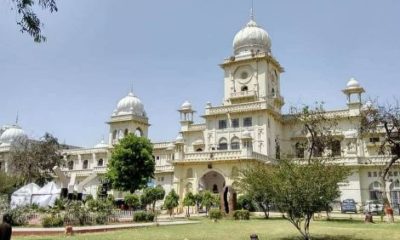Feature
Centre aims to provide 24X7 power to all by 2019

New Delhi: The central government is on target to meet its ambitious goal to give uninterrupted electricity to all homes across India, an official said here Sunday.

“Comprehensive state-specific action plans for 24×7 power to all homes is being prepared in partnership with respective states, encompassing generation, transmission and distribution,” the power ministry said in its year-end review.
“We believe our steps to increase coal production are on the right track, our targets are quite doable, whether it is renewable energy, coal production or 24×7 power, we are very confident of our targets,” said Power Minister Piyush Goyal, who also holds the portfolios of coal and new and renewable energy.
According to official estimates, 53 million homes in the country are not yet electrified and many offices and factories continue their operation on diesel gensets.
The year closed with the government this month tabling in parliament significant pieces of legislation involving the sector – on the reallocation and auction of 204 coal mines cancelled previously by the Supreme Court, and for makng amendments to the of 2003.
Coal Secretary Anil Swarup said: “There are 380 million tonnes of coal lying in these mines and when extracted will help us stop imports and take us to the target of one billion tonnes of coal production in the next few years.”
With the cabinet approval of the guidelines for e-auction of the blocks earlier this week, the government has started the process of allocating 41 coal blocks. The tender documents for the auction were released Saturday.
For the regulated power sector, the government has ensured that tariffs do not go up due to auctions by choosing the reverse bidding route, with state miner Coal India’s price providing the upper limit while the bidder with the lowest bid will be declared the winner.
The government has set a target of doubling electricity generation from one trillion units to two trillion units by 2019, giving a renewed focus on renewables with generation going up from the current 53 billion units to 300 billion units in five years. The target for solar power generation has been put at 100,000 MW by 2019.
The share of renewable energy is currently just over 5 percent of the total base made up of one trillion units of electricity.
Through the Electricity (Amendment) Bill, 2014 tabled last week, the central government proposes to introduce stricter penalties for failing to meet renewable purchase obligation (RPO) targets.
Under the RPO system, the state power distribution companies have to mandatorily purchase electricity generated through renewable energy sources during the year.
The proposed changes will also introduce the renewable generation obligation (RGO), which will make it compulsory for thermal power producers to generate electricity through renewables.
The salient changes proposed in the Electricity Act are aimed at enhancing grid safety, unbundling the distribution sector, promoting renewable energy and tariff rationalisation.
Within a given area, multiple distribution companies would be licensed to operate and offer power to consumers.
State-miner Coal India is looking to double its production from the estimated 500 million tonnes this year to a billion tonne in 2019.
Entertainment
Meghalaya Reserves Legalized Gambling and Sports Betting for Tourists

The State Scores Extra High on Gaming-Friendly Industry Index
Meghalaya scored 92.85 out of 100 possible points in a Gaming Industry Index and proved to be India’s most gaming-friendly state following its recent profound legislation changes over the field allowing land-based and online gaming, including games of chance, under a licensing regime.
The index by the UK India Business Council (UKIBC) uses a scale of 0 to 100 to measure the level of legalisation on gambling and betting achieved by a state based on the scores over a set of seven different games – lottery, horse racing, betting on sports, poker, rummy, casino and fantasy sports
Starting from February last year, Meghalaya became the third state in India’s northeast to legalise gambling and betting after Sikkim and Nagaland. After consultations with the UKIBC, the state proceeded with the adoption of the Meghalaya Regulation of Gaming Act, 2021 and the nullification of the Meghalaya Prevention of Gambling Act, 1970. Subsequently in December, the Meghalaya Regulation of Gaming Rules, 2021 were notified and came into force.
All for the Tourists
The move to legalise and license various forms of offline and online betting and gambling in Meghalaya is aimed at boosting tourism and creating jobs, and altogether raising taxation revenues for the northeastern state. At the same time, the opportunities to bet and gamble legally will be reserved only for tourists and visitors.
“We came out with a Gaming Act and subsequently framed the Regulation of Gaming Rules, 2021. The government will accordingly issue licenses to operate games of skill and chance, both online and offline,” said James P. K. Sangma, Meghalaya State Law and Taxation Minister speaking in the capital city of Shillong. “But the legalized gambling and gaming will only be for tourists and not residents of Meghalaya,” he continued.
To be allowed to play, tourists and people visiting the state for work or business purposes will have to prove their non-resident status by presenting appropriate documents, in a process similar to a bank KYC (Know Your Customer) procedure.
Meghalaya Reaches Out to a Vast Market
With 140 millions of people in India estimated to bet regularly on sports, and a total of 370 million desi bettors around prominent sporting events, as per data from one of the latest reports by Esse N Videri, Meghalaya is set to reach out and take a piece of a vast market.
Estimates on the financial value of India’s sports betting market, combined across all types of offline channels and online sports and cricket predictions and betting platforms, speak about amounts between $130 and $150 billion (roughly between ₹9.7 and ₹11.5 lakh crore).
Andhra Pradesh, Telangana and Delhi are shown to deliver the highest number of bettors and Meghalaya can count on substantial tourists flow from their betting circles. The sports betting communities of Karnataka, Maharashtra, Uttar Pradesh and Haryana are also not to be underestimated.
Among the sports, cricket is most popular, registering 68 percent of the total bet count analyzed by Esse N Videri. Football takes second position with 11 percent of the bets, followed by betting on FIFA at 7 percent and on eCricket at 5 percent. The last position in the Top 5 of popular sports for betting in India is taken by tennis with 3 percent of the bet count.
Local Citizens will Still have Their Teer Betting
Meghalaya residents will still be permitted to participate in teer betting over arrow-shooting results. Teer is a traditional method of gambling, somewhat similar to a lottery draw, and held under the rules of the Meghalaya Regulation of the Game of Arrow Shooting and the Sale of Teer Tickets Act, 2018.
Teer includes bettors wagering on the number of arrows that reach the target which is placed about 50 meters away from a team of 20 archers positioned in a semicircle.
The archers shoot volleys of arrows at the target for ten minutes, and players place their bets choosing a number between 0 and 99 trying to guess the last two digits of the number of arrows that successfully pierce the target.
If, for example, the number of hits is 256, anyone who has bet on 56 wins an amount eight times bigger than their wager.





















